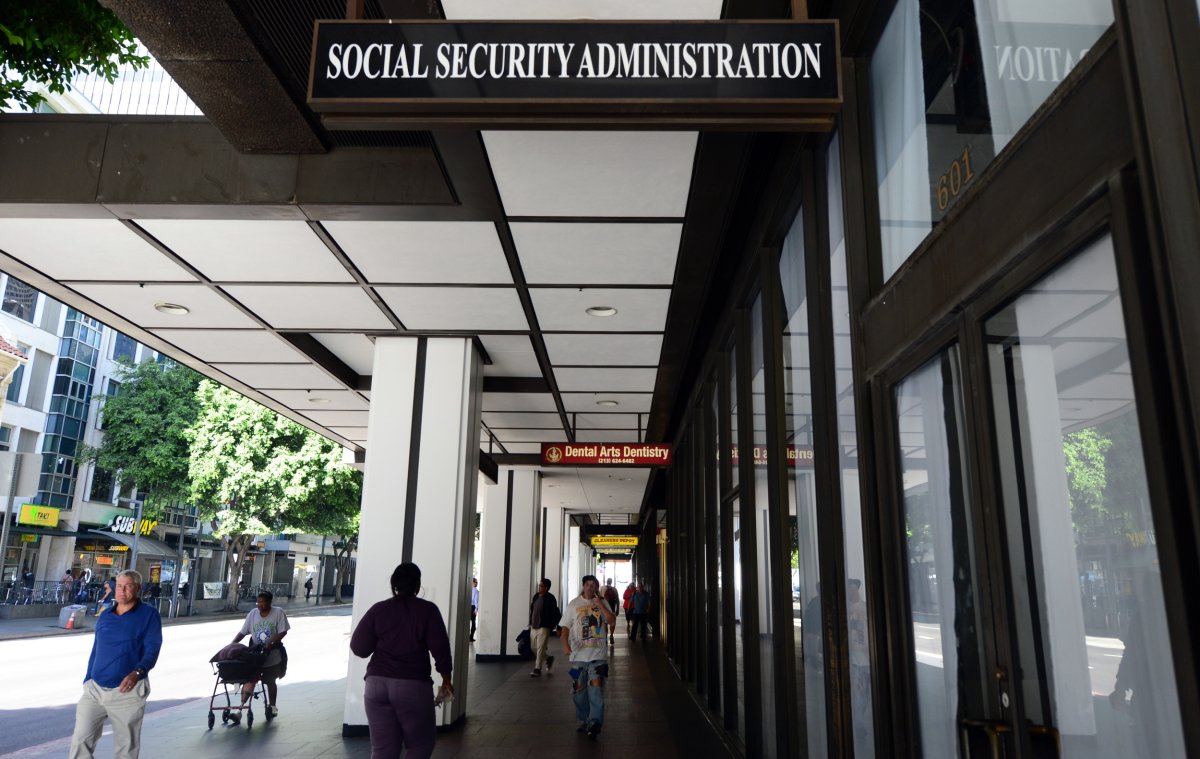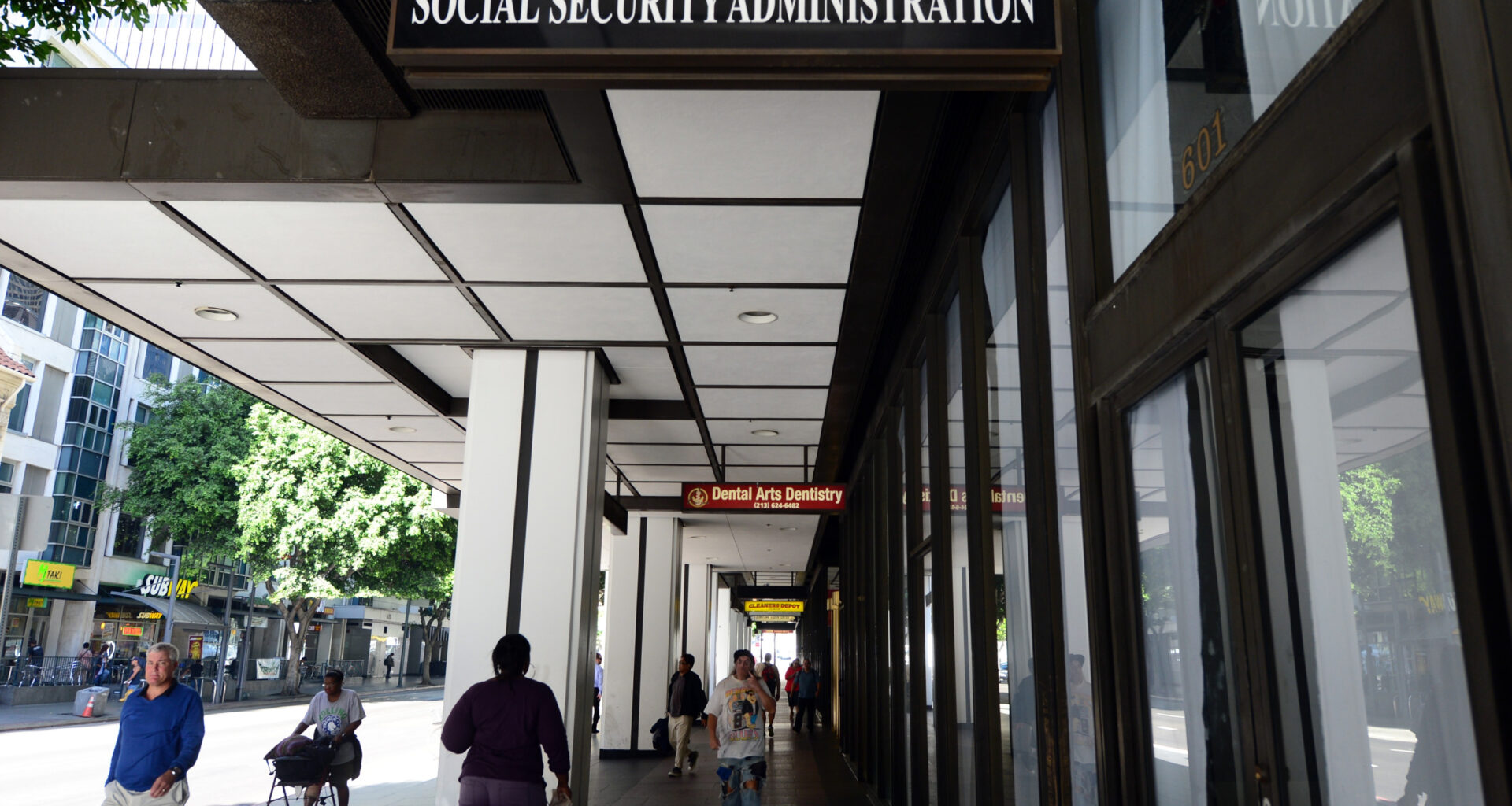Retirees rely on Social Security across the country to help pay for basic living expenses, but the amount of money they need on top of their monthly benefits varies drastically based on where they live.
In a new LendingTree report, cities were ranked on where Social Security goes the furthest for seniors as well as the states that required the most amount of money on top of the benefits to meet their basic needs.
Why It Matters
Social Security lifts more than 22 million people out of poverty each year, according to Justice in Aging. And half of older adults rely on Social Security for the majority of their income.
However, with the average retirement benefit check at $2,002 in 2025, many seniors aren’t able to make this money stretch for their full monthly needs.
Cost of living, housing prices and inflation within their specific location can significantly impact their overall quality of life as well if mostly relying on their Social Security check.

Pedestrians walk past the Social Security Administration office in downtown Los Angeles, on October 1, 2013.
Pedestrians walk past the Social Security Administration office in downtown Los Angeles, on October 1, 2013.
FREDERIC J. BROWN/AFP via Getty Images
What To Know
On average, Social Security covers roughly 30 percent of retirees’ spending, LendingTree found. Across the 100 largest U.S. metros, retirees needed about $71,407 to survive, while the average Social Security income is $21,500.
However, your specific city and state could play a major role in how far your payment stretches.
In a place like McAllen, Texas, Social Security covers more than one-third of retirement spending, which is estimated at $61,821.
Other cities that were ranked best for Social Security beneficiaries included Buffalo, New York; El Paso, Texas; Syracuse, New York; and Scranton, Pennsylvania.
“You often hear that the cost of living in New York is burdensome, but what many forget is that New York is more than just Manhattan and the five boroughs,” Kevin Thompson, the CEO of 9i Capital Group and host of the 9innings podcast, told Newsweek. “Cities like Buffalo and Syracuse frequently rank among the most affordable places to live, even though they’re part of a state known for its high costs.”
However, some cities left retirees scrambling for cash, even with the average Social Security check mailed out monthly.
The worst cities for Social Security beneficiaries to make their payment stretch far enough were: San Francisco, California; Los Angeles, California; Washington, D.C.; Oxnard, California; and San Jose, California.
“It shouldn’t be surprising to see that Social Security doesn’t go very far in the biggest, most expensive cities in America,” Matt Schulz, LendingTree chief consumer finance analyst, told Newsweek.
“However, the fact that Social Security doesn’t cover more than about a third of spending costs in any big city in America is pretty sobering. It means no matter where you live, you better have a pension or some significant money set aside or retirement could be a major struggle financially.”
California, known for its high cost of living, saw an implied pretax need as high as $85,364 for retirees in San Francisco. Meanwhile, in Los Angeles, residents would still need $83,414 in retirement.
“Very few people can comfortably say they’ll have plenty of money to retire on regardless of what happens to Social Security,” Schulz said in the report. “Knowing that, the more you can put into retirement savings and the longer you can do it, the better off you’ll be.”
What People Are Saying
Matt Schulz, LendingTree chief consumer finance analyst, in the report: “Most aren’t fortunate enough to have a seven-figure nest egg or a pension to lean on. Most people have tight budgets, limited expendable income and low retirement account balances. It’s all going to add up to a challenging situation for retirees and their loved ones in the next 15 to 20 years.”
Alex Beene, a financial literacy instructor for the University of Tennessee at Martin, told Newsweek: “States like Texas and Oklahoma ranking highest on locations where social security covers the highest amount of retirees’ spending, should come as no surprise, as expenses in retirement in these areas tend to be less when compared to the national average.
“Meanwhile, California ranks as a smaller percentage, in part because many retirees there have greater expenses and have larger nest eggs at retirement. It’s good fuel for thought as many baby boomers enter retirement and pick locations where their savings will stretch further.”
What Happens Next
As the cost of living rises, many retirees may be forced to move out of states like California, experts said.
“As retirees evaluate where to live, many may be forced to decide between the California lifestyle and more cost-effective alternatives,” Thompson said.
“I’ve traveled to California several times recently and completely understand the appeal—the weather, the natural beauty, the air quality and overall lifestyle are unmatched. But for many retirees, that lifestyle comes with a price tag that simply isn’t sustainable. For some, the cost of living may become a barrier they can no longer afford to ignore.”

